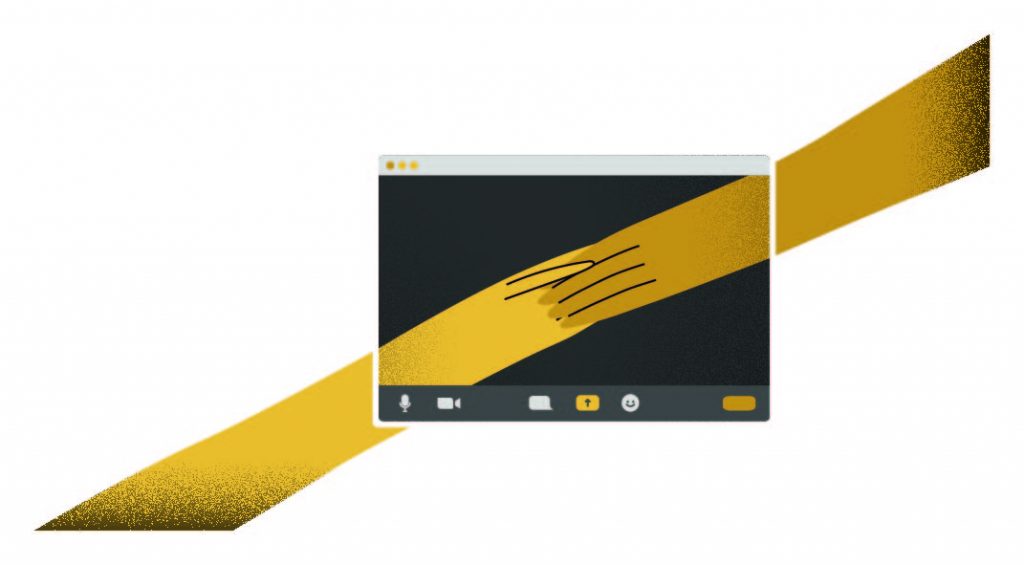Swipe left. Half swipe. Swipe up. To many teens, this may seem like a common language, a series of flicks and taps to navigate the world of social media. But like a percentage of the population, it’s a language I never learned. A learned behavior, my science teacher might say, not innate. Like birds weaving nests in the branches.
So how does a bird who can’t build find its place in the world?
Like an architecturally doomed bird, not using social media is an abnormality in our society. In fact, at Paly, only 10.8% of students don’t use social media, according to an opt-in online survey of 290 students conducted by Verde in September. Of those who do, 84.3% of students use it to stay connected with friends and family.
Even before the pandemic forced us to shelter in place, the world used Instagram, Twitter and even TikTok to communicate across borders. And especially now, due to fewer in-person interactions, many have turned to social media. As with many things, from the necessity of healthcare to our love for travel, the pandemic has amplified its importance: what was once another way to stay connected is now one of the only windows to a wider, more social world. Or so I imagine. I wouldn’t know, because like I said, I’m not on social media.
At Paly, only 10.8% of students don’t use social media.
Okay, so social media connects people. How do I stay connected without it? Well, it involves tireless training, elite mental prowess and just a little bit of dark magic.
To be honest, I’m not the most social, outgoing person. Back in the olden days, when I would actually crawl out of bed before 8 a.m. and pedal myself to school, I mostly relied on seeing friends in class and at lunchtime to connect with them. So when campus closed and we all shut our doors, I had to put in significantly more effort to find that connection.
Since then, instead of bumping into someone on the Quad, I’m waiting for a time when we’re both available to Zoom. What was once chatting in person has shifted to messaging a classmate as we sit in the Zoom waiting room. I get work done with friends on Zoom, or play card games on Zoom. Zoom to Zoom to Zoom. The only exception is when I scrape myself off my chair and actually go outside to bring our dog to her friends — socially distanced, of course. But even then, it’s just not the same, whether in person and in masks or on Zoom. I miss out on that casual community I took for granted.
And that’s what social media is so great at, that ambient connection that’s subtle yet strong. With it, you can share what you’re doing and peek into the lives of others in a smooth, broadcast-type style. Without it, you’re on your own.
I mostly relied on seeing friends in class and at lunchtime to connect with them.
I’ve found that my method of connecting with friends is more direct: I message them directly, or call them directly. In some ways, that’s nice because I reinforce those strong friendships. But at the same time, I’m missing out on meeting new people, on getting to know the super welcoming classmates or friends of friends that I’ve always wanted to know better.
Yet it’s not all hopeless. As the school year continues, those breakout room silences are slowly getting shorter. The chat box is becoming more and more friendly. I’m starting to connect with my classmates, perhaps in a slightly more personal way than before while we all struggle together. Despite everything, we’re making it work, and I think that says a lot about our resilience as a community.
Maybe I will sign up on Instagram one day. Maybe I won’t. But no matter what, there are still ways to stay connected. I miss seeing people in person and not-so-patiently await the moment we can safely return to campus, and I’m slowly growing sick of “Sign in to join Zoom” and “Your internet connection is unstable.” But if it means catching up with my friends, I’ll gladly hop on some more video calls. Even if a bird can’t build, maybe it doesn’t need to. It’s found its home in the world.
*Source: The data presented here comes from an opt-in Verde Magazine survey of 290 Palo Alto high school students through all four grades. Verde conducted the survey from Sept. 19 to Sept. 24 through a digital form published on school social media and Schoology pages. Responses were anonymous and participation for all questions was optional.
RELATED STORIES
Digital disagreement: Social media’s political battleground
The sham of Instagram: Social media’s impact on perfectionism



